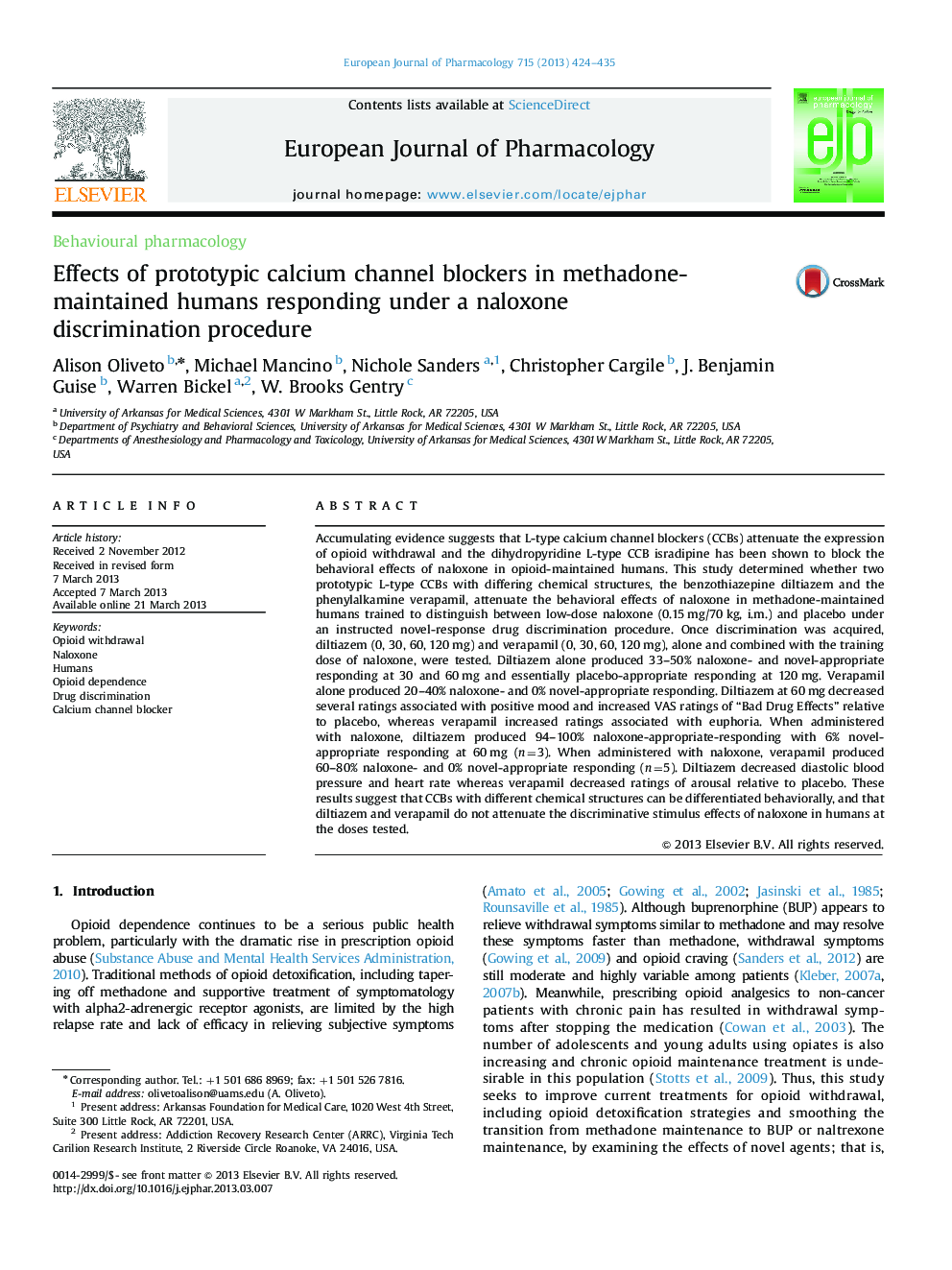| Article ID | Journal | Published Year | Pages | File Type |
|---|---|---|---|---|
| 2532070 | European Journal of Pharmacology | 2013 | 12 Pages |
Accumulating evidence suggests that L-type calcium channel blockers (CCBs) attenuate the expression of opioid withdrawal and the dihydropyridine L-type CCB isradipine has been shown to block the behavioral effects of naloxone in opioid-maintained humans. This study determined whether two prototypic L-type CCBs with differing chemical structures, the benzothiazepine diltiazem and the phenylalkamine verapamil, attenuate the behavioral effects of naloxone in methadone-maintained humans trained to distinguish between low-dose naloxone (0.15 mg/70 kg, i.m.) and placebo under an instructed novel-response drug discrimination procedure. Once discrimination was acquired, diltiazem (0, 30, 60, 120 mg) and verapamil (0, 30, 60, 120 mg), alone and combined with the training dose of naloxone, were tested. Diltiazem alone produced 33–50% naloxone- and novel-appropriate responding at 30 and 60 mg and essentially placebo-appropriate responding at 120 mg. Verapamil alone produced 20–40% naloxone- and 0% novel-appropriate responding. Diltiazem at 60 mg decreased several ratings associated with positive mood and increased VAS ratings of “Bad Drug Effects” relative to placebo, whereas verapamil increased ratings associated with euphoria. When administered with naloxone, diltiazem produced 94–100% naloxone-appropriate-responding with 6% novel-appropriate responding at 60 mg (n=3). When administered with naloxone, verapamil produced 60–80% naloxone- and 0% novel-appropriate responding (n=5). Diltiazem decreased diastolic blood pressure and heart rate whereas verapamil decreased ratings of arousal relative to placebo. These results suggest that CCBs with different chemical structures can be differentiated behaviorally, and that diltiazem and verapamil do not attenuate the discriminative stimulus effects of naloxone in humans at the doses tested.
